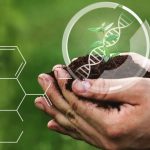Lauryl Myristyl Alcohol, a fatty alcohol derived from renewable plant sources such as palm and coconut oils, is a key ingredient in personal care, industrial, and household products. As the world increasingly shifts towards eco-friendly solutions and green manufacturing, the demand for sustainable Lauryl Myristyl Alcohol production has intensified. This shift is accompanied by significant innovations in production methods, sourcing, and end-use applications. In this blog, we explore the sustainability trends and innovations driving growth in the Lauryl Myristyl Alcohol market, and how these factors will shape the industry from 2025 to 2034.
Order a sample PDF of the Lauryl Myristyl Alcohol Market Intelligence Study, published by Vantage Market Research.
Understanding Lauryl Myristyl Alcohol and Its Applications
Lauryl Myristyl Alcohol is a type of fatty alcohol, a versatile compound used primarily as an emulsifier, surfactant, and conditioning agent in personal care products. It has a wide range of uses, including in shampoos, conditioners, body lotions, soaps, and even cleaning products. Its hydrating and emulsifying properties also make it useful in industrial applications like lubricants, coatings, and detergents. The compound’s ability to improve product texture and performance while being derived from renewable plant sources positions it as a key player in the growing demand for sustainable and biodegradable ingredients.

Sustainability in Lauryl Myristyl Alcohol Production
Green Sourcing: Renewable and Eco-Friendly Raw Materials
The growing global demand for sustainability in manufacturing has significantly influenced Lauryl Myristyl Alcohol production. Traditionally, fatty alcohols were derived from non-renewable resources, but today, a shift toward plant-based oils such as coconut and palm kernel oil is becoming the norm. This shift supports the creation of biodegradable and renewable products, reducing dependence on petrochemical-based ingredients.
Palm oil, for instance, is widely used in Lauryl Myristyl Alcohol production, but concerns regarding deforestation and land use have led to calls for more sustainable palm oil sourcing. As a result, many manufacturers are turning to sustainable palm oil certified by the Roundtable on Sustainable Palm Oil (RSPO) to ensure their production processes align with environmental and social governance (ESG) standards. These efforts not only help reduce carbon footprints but also meet the rising demand for responsibly sourced ingredients from consumers and regulatory bodies.
The coconut oil industry, similarly, is working to improve sustainability by promoting organic and fair-trade certification programs that ensure more responsible farming practices.
Biotechnological Advances: Bio-Based Production Methods
One of the most significant innovations in the Lauryl Myristyl Alcohol production process is the use of biotechnological methods. Traditionally, Lauryl Myristyl Alcohol was produced through chemical processes involving hydrogenation. However, more recent advancements in biotechnological production methods have enabled manufacturers to use enzymes and microorganisms to synthesize fatty alcohols more efficiently and sustainably. This shift not only reduces energy consumption but also minimizes harmful byproducts, making the process cleaner and greener.
Fermentation technology, in particular, is gaining traction as a method to produce Lauryl Myristyl Alcohol from renewable biomass. By using plant-based sugars and other organic materials, bio-based production methods significantly reduce the environmental impact compared to traditional methods. These innovations align with global efforts to move towards a circular economy, where waste is minimized, and resources are reused efficiently.
Energy-Efficient Production Technologies
Energy efficiency plays a pivotal role in the overall sustainability of Lauryl Myristyl Alcohol production. The implementation of more energy-efficient technologies can reduce the carbon footprint of manufacturing processes. One such technology is the adoption of cleaner, greener energy sources such as solar and wind power, which can help reduce emissions associated with production.
Additionally, the optimization of industrial processes through automation and advanced control systems can further improve energy efficiency. The use of digitalization and artificial intelligence (AI) in manufacturing can help monitor and control energy consumption, allowing for greater precision in the production process and reducing waste.
Innovation in Lauryl Myristyl Alcohol Products
Plant-Derived and Biodegradable Products
The trend toward sustainability is not limited to the production process alone; it extends to the end products containing Lauryl Myristyl Alcohol. As consumers become more environmentally conscious, they are increasingly seeking products that are plant-derived, biodegradable, and free from harmful chemicals. This trend has led to an increase in the number of personal care brands that focus on natural, eco-friendly formulations.
Manufacturers are responding to this demand by creating Lauryl Myristyl Alcohol-based products that are not only effective but also safer for the environment. The ability of Lauryl Myristyl Alcohol to naturally break down without leaving harmful residues makes it an attractive option for formulating biodegradable soaps, shampoos, and lotions.
Functional Additives in Formulations
In addition to its primary use as an emulsifier and surfactant, Lauryl Myristyl Alcohol is also being incorporated into formulations as a functional additive. In skincare, it helps to enhance the texture and spreadability of creams and lotions, improving the overall sensory experience. In haircare, it can work as a conditioning agent that adds shine and softness to the hair, improving its health and manageability.
As consumer demands shift toward multi-functional products, Lauryl Myristyl Alcohol is increasingly used in innovative formulations that combine its hydrating, emulsifying, and conditioning properties. For instance, Lauryl Myristyl Alcohol is increasingly used in combination with other sustainable ingredients such as plant-based oils and natural extracts to create high-performing yet eco-friendly cosmetic and cleaning products.
Sustainable Packaging and Product Distribution
Another innovation that aligns with sustainability efforts is the growing emphasis on eco-friendly packaging. Personal care brands and industrial manufacturers are seeking packaging solutions that are recyclable, reusable, and made from sustainable materials. This trend is particularly relevant as consumers demand transparency about product ingredients and packaging practices.
As more brands focus on eco-consciousness in their product offerings, Lauryl Myristyl Alcohol plays an integral role in formulations that cater to this growing consumer sentiment.
The Market Outlook for Lauryl Myristyl Alcohol (2025-2034)
The market for Lauryl Myristyl Alcohol is expected to experience significant growth over the next decade, driven by sustainability trends and innovations in production. According to a report by Vantage Market Research, the global fatty alcohol market, of which Lauryl Myristyl Alcohol is a key component, is forecasted to grow steadily through 2034. The increasing demand for natural personal care products, eco-friendly industrial applications, and sustainable production methods will continue to support the market’s expansion.
As regulations surrounding sustainability become stricter and consumer demand for environmentally friendly products increases, Lauryl Myristyl Alcohol’s position in the market is likely to strengthen. Manufacturers that invest in sustainable sourcing, energy-efficient production, and innovative product formulations will be well-positioned to capitalize on these trends.
Gather more insights about the market drivers, restrains and growth of the Global Lauryl Myristyl Alcohol Market
Conclusion
Sustainability and innovation are the twin pillars driving the future growth of the Lauryl Myristyl Alcohol market. As consumers and industries alike push for more eco-conscious products and production practices, Lauryl Myristyl Alcohol is poised to play an increasingly important role in shaping the future of personal care and industrial applications. To access detailed information on market trends, leading players, and regional insights, refer to the full Lauryl Myristyl Alcohol Market report published by Vantage Market Research. By embracing these sustainability trends and continuing to innovate, manufacturers can lead the way in providing consumers with products that are both effective and environmentally responsible.
![[Market Research Reports] – Research Google News Blog | VMR.Biz](https://www.vmr.biz/wp-content/uploads/2022/12/logo-removebg-preview.png)











